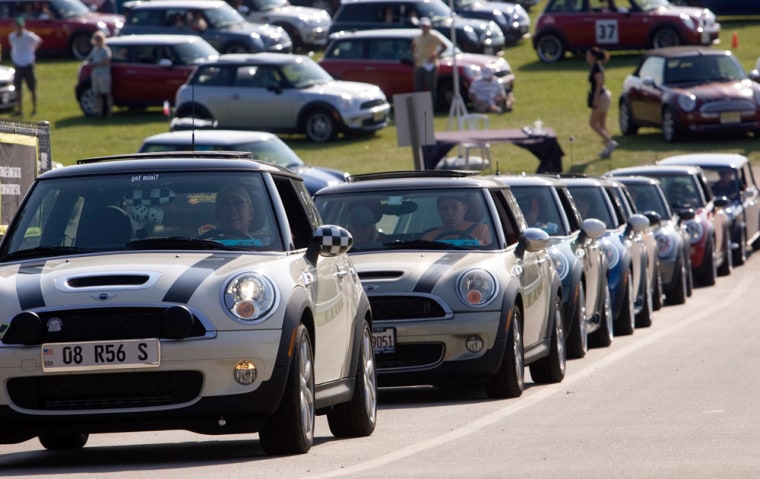Rich Batchelder bought his second Mini Cooper last year, a 2006 supercharged convertible.
And the attributes he sought in his new car are exactly what experts say many of us will be looking for in coming years while automakers try to perfect a replacement for the internal combustion engine.
Batchelder’s Mini is a lightweight subcompact, yet its interior is luxurious. Its 1.6-liter, four-cylinder engine gets him 27 miles per gallon in combined city and highway driving, yet its suspension is stiff for handling and the supercharged motor makes the tiny car very fast.
“The thing looks cute, it looks fun, but it’s a serious automobile,” said the suburban Boston computer store owner. “To me it’s a superior vehicle as far as its motoring capabilities, everything from handling to functionality.”
Auto industry experts say Batchelder’s car is one example of what we’ll all be driving as gas prices stay high and the industry shifts toward rechargeable electric vehicles or even cars powered by hydrogen fuel cells.
Right now, engineers at all automakers are working extra hours trying to squeeze as much gas mileage as they can out of the internal combustion engine.
That includes more refined gas-electric hybrids, competitors to the popular Toyota Prius, which now gets an estimated 45 mpg on the highway and 48 in the city.
Also coming soon are four-cylinder engines that perform like six-cylinders, and sixes that perform as V-8s, boosted by either turbocharging or supercharging.
There’s also more efficient automatic transmissions out or in the works, with some having as many as eight speeds. Experts expect biofuels like ethanol to become more prevalent, and starting to hit the market already are high-mileage diesels and direct fuel injection gasoline engines that are far more efficient than current gasoline motors.
“You’re going to have a whole lot of overlap,” said John Krafcik, Hyundai Motor Co.’s North American vice president of product development. “Small, incremental improvements to the internal combustion engine, which still has life in it in terms of extracting efficiency.”
Improving aerodynamics
Automakers also are working on aerodynamics and processes that use exhaust heat and gasses so no energy goes to waste.
“All of those are going through a transition, and they will continue to do so,” said Nancy Gioia, Ford Motor Co.’s director of sustainable technologies and hybrid vehicle programs.
Today’s vehicle designs aren’t always as aerodynamic as they could be, said Gioia, and technology might be able to eliminate items on cars that cause wind drag, such as cameras replacing side-view mirrors.
“A lot of the shapes we have today are based on models of horses pulling the wagon,” Gioia said.
Some automakers have come up with electronically controlled intake and exhaust valves, with computers controlling the valve openings for maximum efficiency under different loads and road conditions.
The feature, called camless valve actuation, alone will bring 10 percent to 20 percent efficiency gains over current engines, Krafcik said.
They’re also electrifying components that cause drag on engines, such as air conditioning compressors and power steering pumps.
Automakers like Ford also are working with lighter materials and more efficient structural designs to reduce weight, said Gioia.
“As weight comes out, I can downsize a lot of other things and the vehicle in total gets more efficient,” she said.
The changes mean we’ll all be driving smaller vehicles, but not everyone will have a Mini Cooper or other tiny cars from Europe, where gas prices are far higher, said Aaron Bragman, an auto analyst with the consulting company Global Insight.
U.S. drivers, unlike those in Europe, use vehicles to haul bulky objects and a lot of people, as well as for family vacations. In Europe, people can use public transportation for intercity travel.
“We simply need to use our cars a lot more than the Europeans,” Bragman said.
So while smaller cars, trucks, sport utility vehicles and minivans all are in the works, the U.S. vehicle mix won’t become as small as it is in Europe, Bragman said.
Instead of ostentatious big, inefficient vehicles, Bragman sees them pared down to more functional space.
“The next generation of these vehicles is going to be a lot more efficient,” he said. “They’re going to use a lot of the European technology without the European size penalty.”
